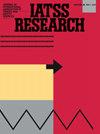Pedestrian delay models for compliant & non-compliant behaviour at signalized midblock crosswalks under mixed traffic conditions
Abstract
The present study aimed to propose new pedestrian delay models for Signalized Midblock Crosswalks (SMC) for mixed traffic conditions. A detailed study of the literature revealed that most of the existing pedestrian delay models were developed for signalized intersections. Thus, the need for the study was established and data were collected at eight SMC in Hyderabad, one of the most densely populated metropolitan cities in India, using video-graphic technique. Two delay models were developed based on the compliance behaviour and non-compliance behaviour of pedestrians. Both models have two components i.e., waiting delay and crossing delay where the latter has two subset components i.e., frictional delay and pedestrian-vehicle interaction delay. The bidirectional effect (pedestrian-pedestrian interaction while crossing the road) of pedestrians was addressed as frictional delay while the non-compliance behaviour by pedestrians and vehicles was addressed as pedestrian-vehicle interaction delay in the present models. The waiting delay component was defined by modifying the Webster delay model for non-uniform pedestrian arrivals. The proposed delay models yielded an error of 5% and 7% for compliance behaviour model and non-compliance behaviour model respectively. The proposed models can be used for optimizing the signal timings and defining Level of Service (LOS) of facilities.

 求助内容:
求助内容: 应助结果提醒方式:
应助结果提醒方式:


